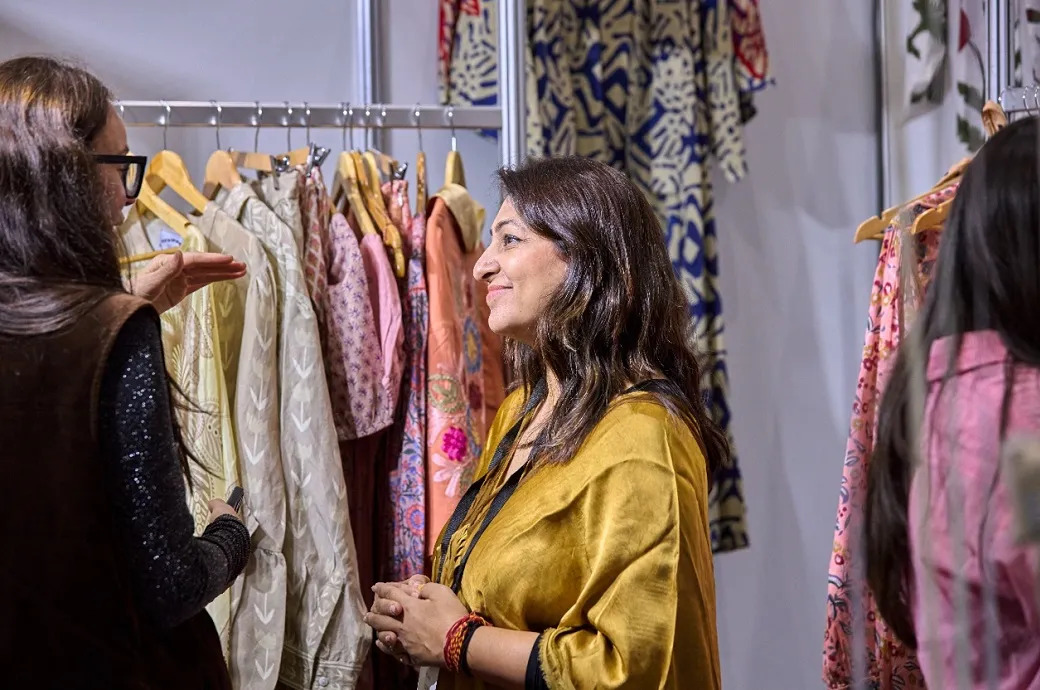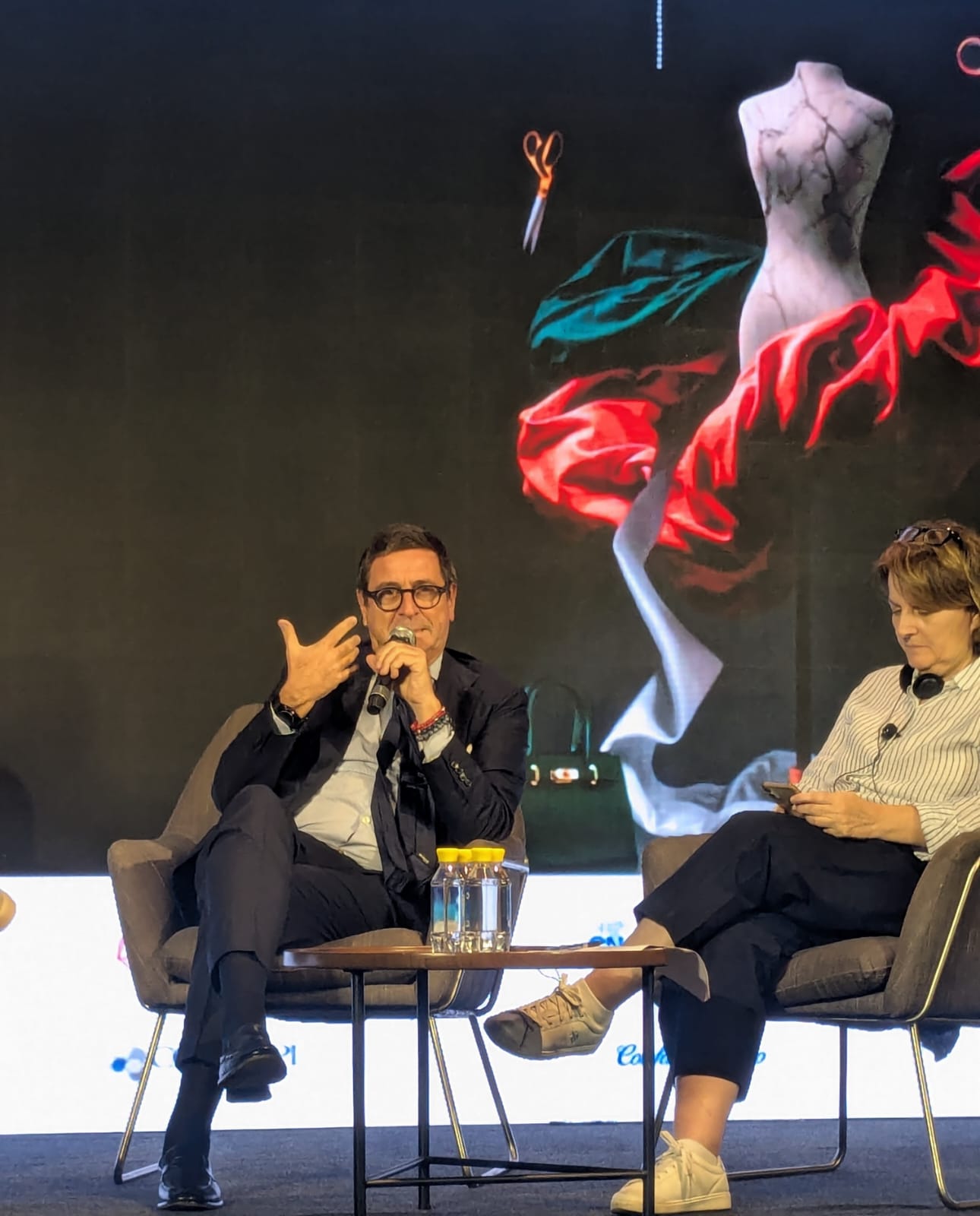FW
As per the Hong Kong Trade Development Company (HKTDC) Turkish exhibitors are trying to capitalise on rising prices of Chinese exports. The latest figures show a decrease in Turkey’s trade with China. In 2012, Turkey imported $1.7 billion worth of clothing items from China which is $300 million less than 2011, partly because of tariffs imposed by the Turkish government.
The silk sector particularly is at stake. China dominates the international sale of silk yarn. However, up to 1991, Turkey produced 15 per cent of the world’s silk supply. When China entered the international mark in the late 1980s, it was supplying silk at an unmatchable $4.00 per kg, but these prices have risen dramatically in the following years.
Turkish manufacturers are convinced that Turkish made fabrics may win on terms of overall quality and technical superiority of dyes used. Further, Turkish companies adhere more strictly to product safety guidelines compared to many Chinese competitors. Turkish companies are more hardworking and have greater technical knowledge, much of it gained from broader experience across Europe than their Chinese counterparts.
A local business analyst underlines that despite import taxes, it is still relatively easy, in financial terms, for Chinese companies to trade with Turkey. Domestic Turkish companies, however are looking for quality apart from the lowest price.
According to Turkey Union of Chamber of Agriculture (TZOB) chairman, Shams Bayraktar, “Cotton imports has been continuously rising, owing to the absence of any measures against the import of cotton in the country.”
A statement issued by TZOB, the said the country imported 613,000 tons of cotton in 2012, which is a 442.5 per cent more compared to the 113,000 tons of cotton imported in 1995. Bayraktar said the cotton sector is one of the most strategic sectors in the country, as it facilitates the textile and apparel sector of Turkey. However, the positive and negative development in cotton sector is highly influenced by industry and trade policies as well as world markets.
The TZOB official said cotton production in the country has also been declining consistently, in 2012, cotton produced in the country was 2.32 million tons, this is expected to decline in 2013 by 2 to 1.7 per cent year-on-year. The TZOB official urged that it was necessary to take measures for supporting Turkish cotton growers for them to compete with international markets.
Innovation was an important part of Intertextile Shanghai Apparel Fabrics and Verve for Design proved this fact while showcasing original designs from Australia, France, Italy, Japan, Korea, Taiwan and UK. The zone offered opportunities for new designers to display their work which was a crucial element of Verve for Design, which was firmly embraced by Australia’s Longina Philips Designs. “We have introduced a new constantly evolving collection called ‘The Print Room’, which was created as a platform to facilitate design by young emerging designers and offered us a distinct edge in terms of the design work we can offer to our clients,” said Senior Designer Shannon Cheung.
Handmade designs was one of the main attractions for Chinese consumers particularly in the mid range market. Italy’s Lineastudio di Sartori Stuart & C SAS is on point with this trend, bringing both handmade and digital designs in a bid to meet the major textile players in the Asian market, said Stuart Sartori, President.
This zone was truly about expressing creativity and showcasing originality. As Dietmar Voegel, owner of UK-based Circleline Designs pointed out, “We work with people who are interested in original design and artwork and want to distinguish themselves from the mass market.”
- 1
- 2
- 3
- 4
- 5
- 6
- 7
- 8
- 9
- 10
Global Sourcing Expo: Offering an unparalleled access to international manufactu…
The highly anticipated Global Sourcing Expo is set to return to the Melbourne Convention and Exhibition Center from November 18,... Read more
The Soulful Stitch: Why ‘High-End’ Italian craftsmanship relies on ‘Happy Tailor…
A fascinating look into the labor practices of high-end Italian craftsmanship revealed a revolutionary philosophy at the recent 'Italian Fashion... Read more
Italian Fashion CEO Warns: 'Small and Beautiful' is no longer enough for global …
The 'Italian Fashion Days in India' (Le Giornate della Moda Italiana nel Mondo), marking a significant new step in the... Read more
Deloitte’s 2025 findings show how Gen Z is forcing a rethink in fashion’s profit…
The fashion industry is entering a generational re-mix. Deloitte’s 2025 Gen Z & Millennial Survey reveals younger consumers who will... Read more
Global Sourcing Hub Descends on Milan: Ready to Show gears up for February 2026 …
The global fashion sourcing industry is set to converge on Milan once again as READY TO SHOW, the only trade... Read more
Blueprint 2030: India’s textile industry charts a $100 bn export mission
When India’s Ministry of Textiles unveiled its four-point action plan recently, it wasn’t just another policy announcement it was a... Read more
Cheaper Indian yarn threatens Bangladesh’s textile backbone
Bangladesh's yarn and textile manufacturing sector is facing a severe crisis, primarily due to a price gap between locally produced... Read more
Threadbare Peace: Why the US-China textile truce freezes pain instead of fixing …
The historic economic understanding between US President Donald Trump and Chinese President Xi Jinping, reached in Busan last week, may... Read more
German Textile and Fashion Industry demands SME friendly procurement rules
The German Textile and Fashion Industry Federation (Gesamtverband textil+mode) is urgently warning the German Bundestag about the potential negative consequences... Read more
Intertextile Shanghai Spring 2026: Driving fashion’s future AI and sustainabilit…
As the global fashion supply chain rapidly evolves through technological advancements, China continues to cement its role as a leader... Read more












